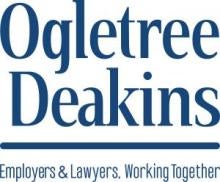The hearing on the Occupational Safety and Health Administration’s (OSHA) proposed Heat Injury and Illness Prevention in Outdoor and Indoor Work Settings Standard began on June 16, 2025. The hearing is the third step in what OSHA describes as a seven-step rulemaking process. It takes place against the backdrop of a major change within the National Institute for Occupational Safety and Health (NIOSH).
Quick Hits
- NIOSH layoffs, including the entire team of heat experts, are expected to impact OSHA’s rulemaking process.
- Without NIOSH’s heat experts, OSHA may struggle to defend the proposed heat safety standard against industry challenges.
- The OSHA hearing on the proposed rulemaking on Heat Injury and Illness Prevention in Outdoor and Indoor Work Settings began on June 16, 2025.
This spring, roughly two-thirds of NIOSH staff were laid off, including the entire team of heat experts. The loss of this team is expected to change the dynamics normally present during the rulemaking process. It will also impact enforcement of the heat national emphasis program (NEP) and the rule, depending on how long the layoffs last.
NIOSH, as the federal agency responsible for developing and establishing safety standard recommendations, has historically provided the scientific research, technical expertise, and data that underpin OSHA’s regulatory efforts. Their research related to heat injury and illness has been foundational, with OSHA citing NIOSH’s work more than 250 times in the draft heat rule, including on definitions, physiological impacts, and effective interventions. The NIOSH team of heat experts also provides expert testimony to support OSHA during litigation of General Duty Clause citations related to heat injury and illness under the NEP.
Without NIOSH’s heat experts, OSHA loses a critical, neutral resource for evaluating scientific evidence, responding to public comments, and defending the necessity and feasibility of the proposed standard. NIOSH experts have played a key role in clarifying information from industry and labor groups. It has also helped OSHA justify its rules as effective, practical, and appropriate. Its absence means OSHA may struggle to provide the robust, evidence-based justifications required by law, especially if the rule is challenged in court.
The layoffs have also halted NIOSH’s public communications on heat safety, including social media campaigns and employer presentations that previously raised awareness and educated stakeholders about heat hazards. This reduction in outreach could lead to less compliance and awareness among employers and workers, further hampering OSHA’s enforcement efforts. The reductions at NIOSH are not expected to render OSHA completely impotent as relates to employers that fail to engage in basic measures to protect employees from the dangers of heat.
As OSHA moves forward with public hearings on the proposed heat rule, the lack of NIOSH expert testimony removes a vital source of scientific input. This gap could make it more difficult for OSHA to counter industry arguments against the rule and to demonstrate that the proposed measures are based on the best available evidence.
The absence of NIOSH’s heat experts makes the proposed standard, already expected to face significant opposition from industry groups, more vulnerable to legal and political challenges. The administration may further weaken the proposed rule without NIOSH being able to counter the lack of effectiveness of proposed modifications to the rule. Without NIOSH’s authoritative support, OSHA’s ability to defend the rule’s scientific basis and necessity is diminished.
The termination of NIOSH’s team of heat experts has weakened OSHA’s capacity to enforce existing heat safety measures and to finalize and defend the proposed national heat standard. The loss of scientific expertise, diminished public outreach, and lack of neutral testimony arguably combine to make the rulemaking process more difficult and the proposed standard more susceptible to being delayed, diluted, or abandoned.



 />i
/>i

